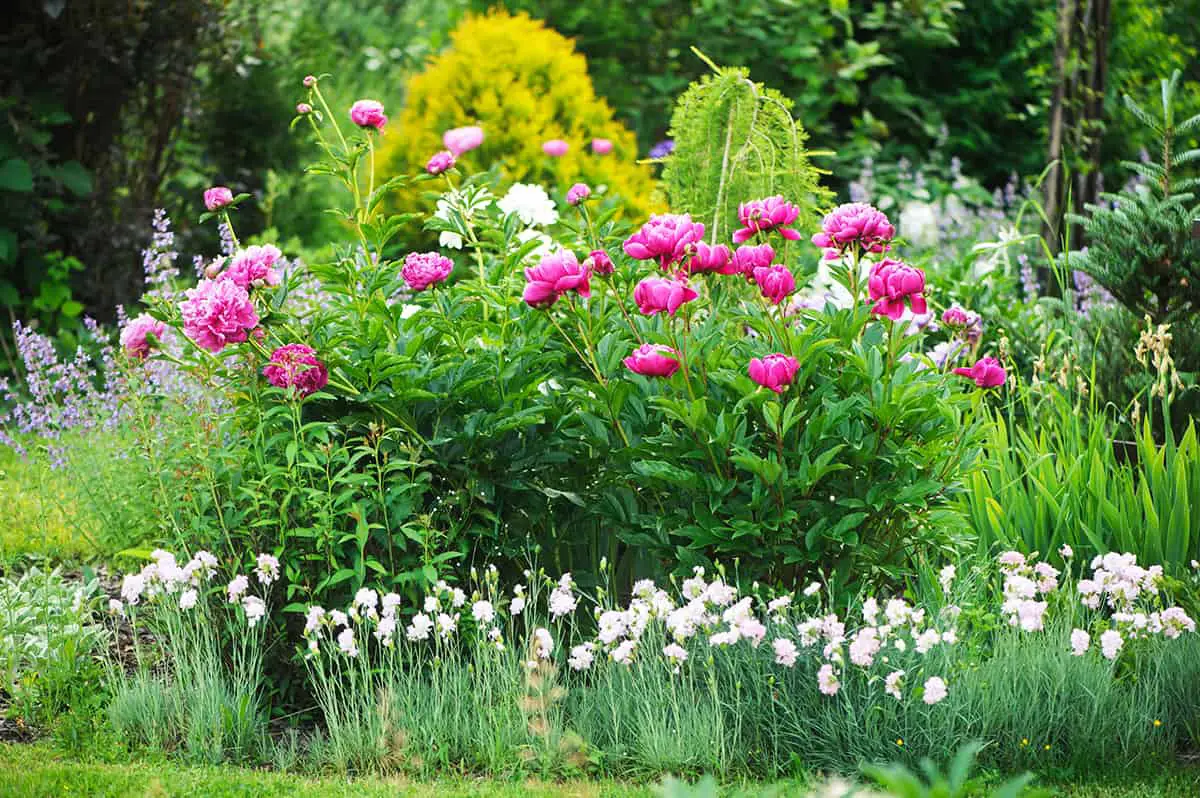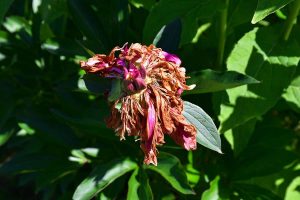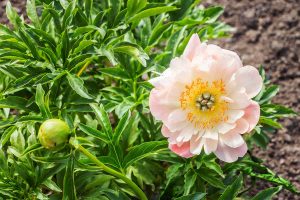Peonies are a delight to witness flowering in the spring garden, but they often flower for a relatively short time. Planting them in a border alongside other plants with different blooming times will give you a profusion of color and beauty that is more long-lasting.
Here we look at the best companion plants for peonies that will give you a longer blooming season, while also adding more color, texture, and contrast to the landscape.
Table of Contents
Considerations for Peony Companion Plants
Blooming time
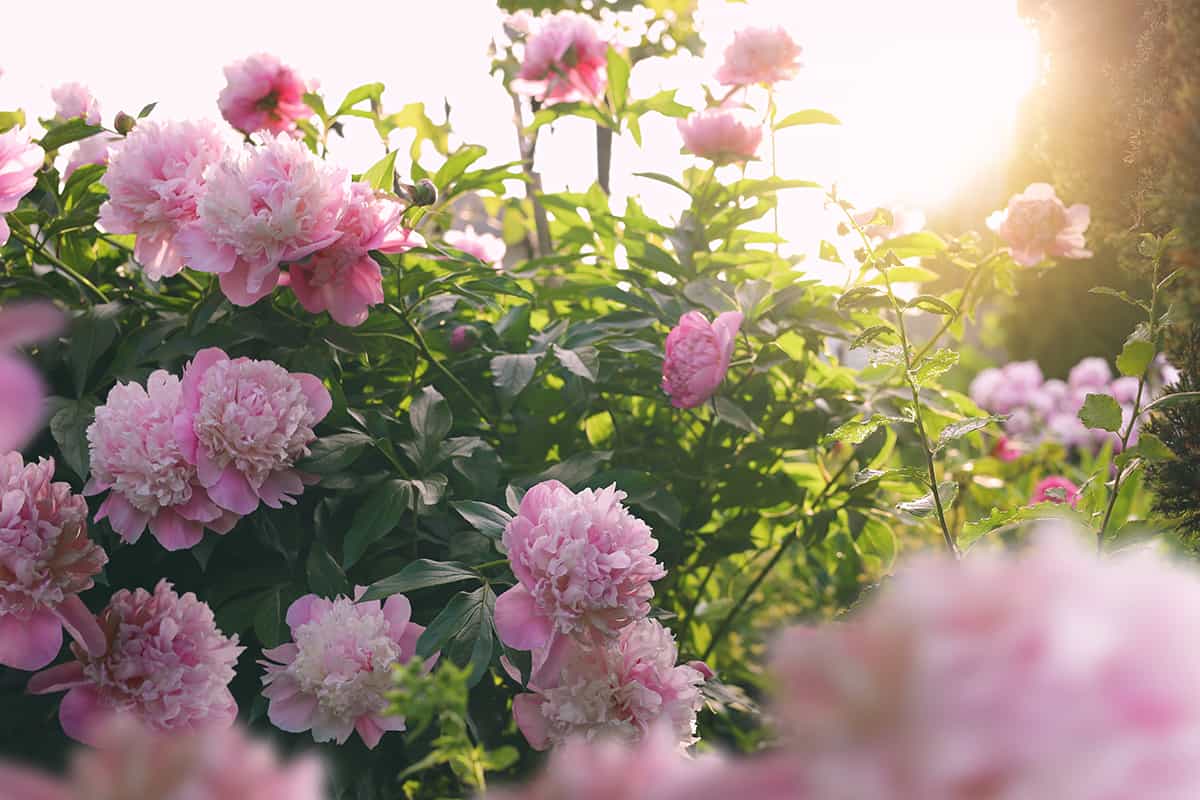
If you want your spring and summer garden to continually be in bloom (who doesn’t?!), then one of the most important things to think about when choosing your plants is the time of year that they bloom, and the length of time they bloom for. Most herbaceous peonies will only bloom for seven to ten days, though they may be early-season, mid-season, or late-season bloomers.
Before you consider which other plants you want to mix in with your peony border, plan out which peonies you are going to use by choosing types that bloom at different times.
If you select a few peonies which have different blooming times, they will effectively bloom in succession to give you peony flowers all season long. Add to this with other plants that will flower at varying points throughout spring and summer, for a garden that blooms in abundance for months at a time.
Color
Consider the color scheme for the flowers in your garden before selecting your plants. Some gardeners prefer to have a specific color scheme, which is religiously adhered to throughout the space. For example, you may only have flowers that bloom in shades of pink and purple.
Other gardeners prefer a more relaxed look, incorporating flowers of all different colors. Making a conscious decision about the types of colors you want to see in your garden will help you to choose what to plant with your peonies.
Height
Peonies are small to medium in height, making them ideal for the midsection of borders. Choosing taller plants to position behind peonies will add an architectural look, with smaller plants set in front of peonies to achieve a layered effect.
Ensuring you have plants that will reach different mature heights will give a much more interesting look to your garden.
Care requirements
Planting peonies alongside other plants which have similar care requirements is absolutely essential. Peonies need plenty of sunlight, well-draining soil, and moderate levels of moisture.
Plants that are grown next to peonies should have the same care requirements so that all of the plants can thrive. A plant which prefers shade and consistently moist soil, such as a fern, is not going to perform well next to a peony.
Best Companion Plants for Peonies
Ornamental Onion
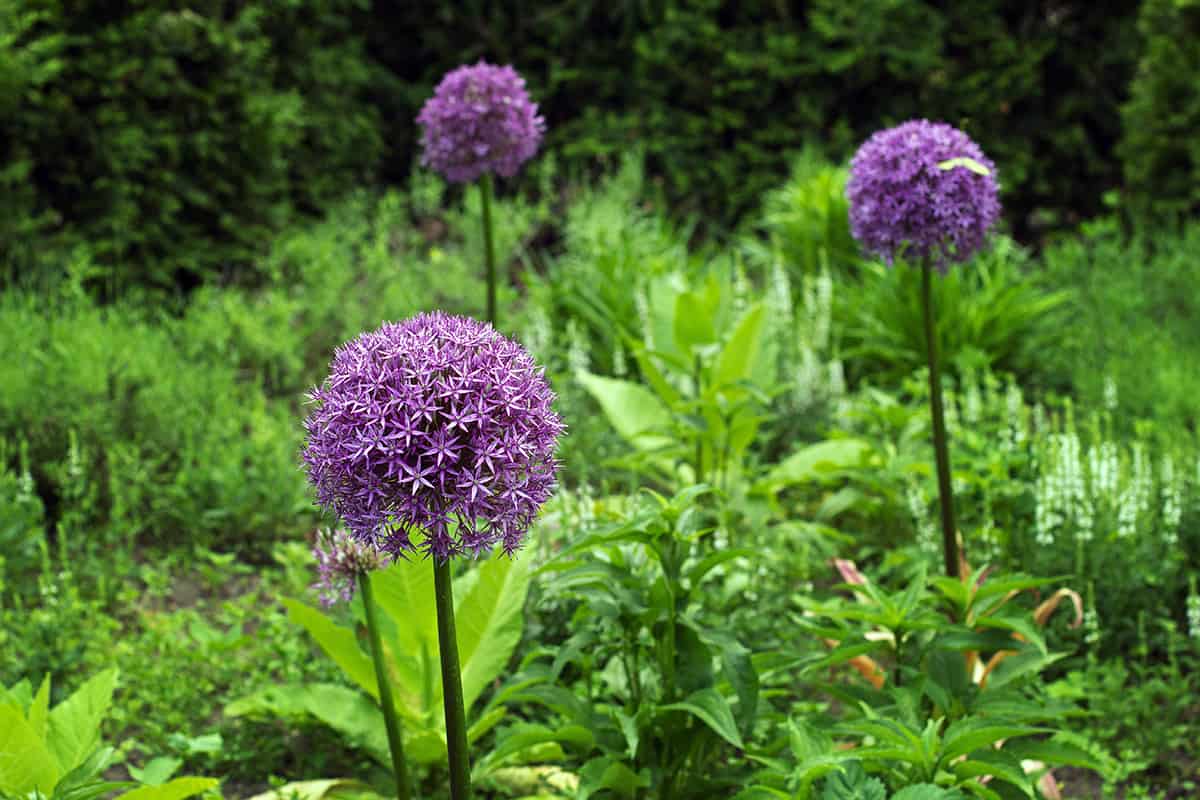
- Botanical name: Allium sp.
- Family: Amaryllidaceae
- USDA hardiness zones: 4 – 8
- Mature height: Up to 4 feet
- Mature spread: Up to 1 foot
Ornamental onions are perennial plants that grow from bulbs. They produce low mounds of strap-like foliage, and tall, strong stems, which produce spiky globes of flowers. They are a great choice of plant for creating some textural contrast alongside peonies, and they offer interest through spring and summer.
These plants will bloom in May and June, with eye-catching spherical flowers in shades of white, purple, and blue. After the flowers are spent, the sphere-shaped heads remain, holding onto seeds that look striking for the remainder of summer. Like peonies, ornamental onions perform well in full sun and they can also tolerate some shade.
They are tolerant of drought but generally grow best in well-draining soils that have low to medium moisture levels. Ornamental onions are very easy to care for and require very little attention after they have been planted. They can survive on rainwater alone and will continue to return year after year to the spring garden.
Bearded Iris
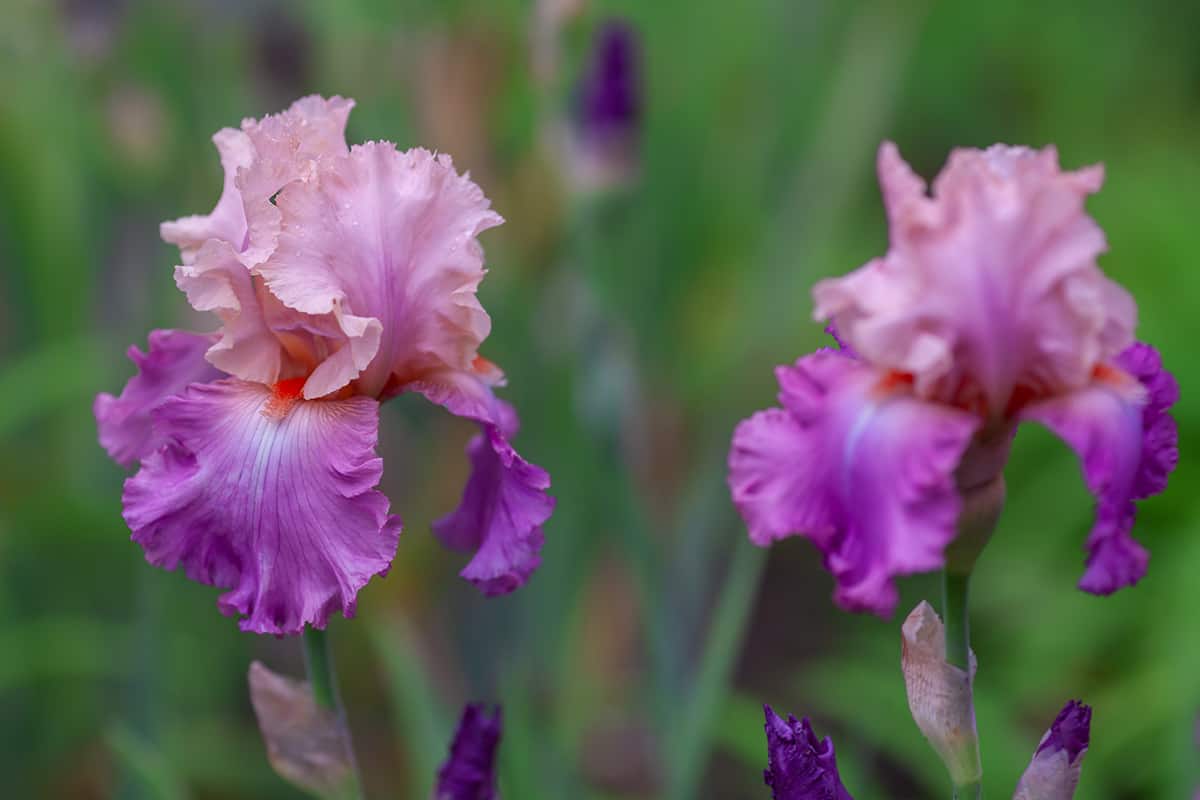
- Botanical name: Iris germanica
- Family: Iridaceae
- USDA hardiness zones: 3 – 9
- Mature height: Up to 4 feet
- Mature spread: 1 to 2 feet
Bearded irises are named after their flowers which have petals hanging down from the upper part of the flower, creating the look of a beard. They come in a huge variety of colors, including purple, yellow, white, pink, and orange, and they are one of the most popular types of iris to grow in the home garden.
They produce low mounds of strap-like foliage and send out thick central stems high above the foliage, where the flowers are held. Flowers can bloom at different points throughout spring and summer, and this is heavily influenced by the weather. Like peonies, bearded iris plants will grow in full sun or partial shade, although you can expect the most flowers in a position of full sun.
They need a well-draining soil and medium moisture and should be divided every three years. They work well alongside peonies in the spring border to add texture and color, and they can also flower for extended periods of time to keep the garden in full bloom.
Lupine
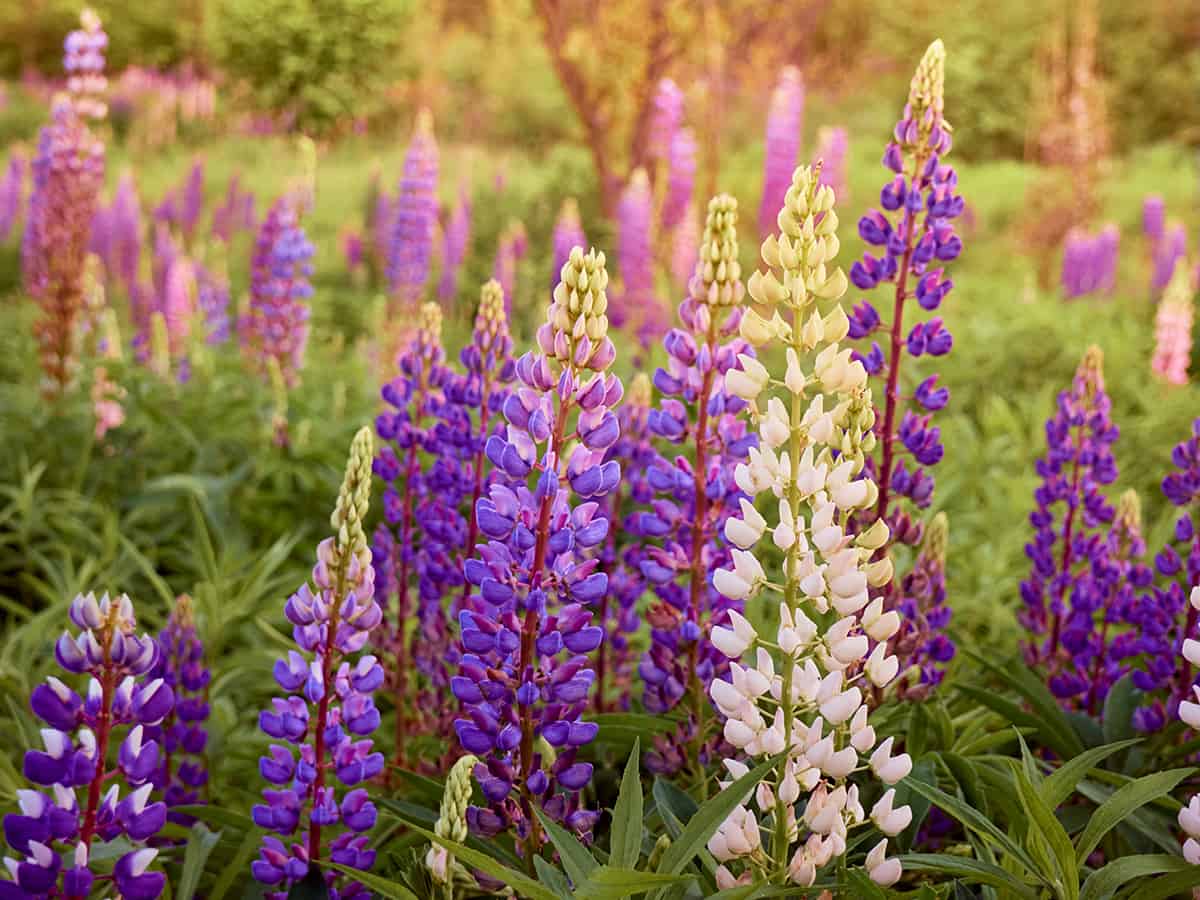
- Botanical name: Lupinus sp.
- Family: Fabaceae
- USDA hardiness zones: 4 – 8
- Mature height: Up to 4 feet
- Mature spread: Up to 2 feet
This is a genus of plants in the pea family which encompasses around 200 different species. Many varieties found in garden nurseries are the result of hybridization. They typically produce sprays of palmate leaves which remain attractive for long after the flowers have died back.
The flowers arrive on chunky stems, forming sword-like spikes. The flowers begin to bloom in succession, starting with those closest to the base of the plant and moving upwards over the course of several weeks until the whole spike is in full bloom. These plants usually start blooming in late spring and continue through early summer.
They enjoy similar conditions to peonies, with full sun exposure, and moist, fertile, well-draining soils. Lupines are short-lived perennials that will live for a few years, though they do a good job of self-sowing, so you may find new lupine plants appearing in your borders.
Common Foxglove
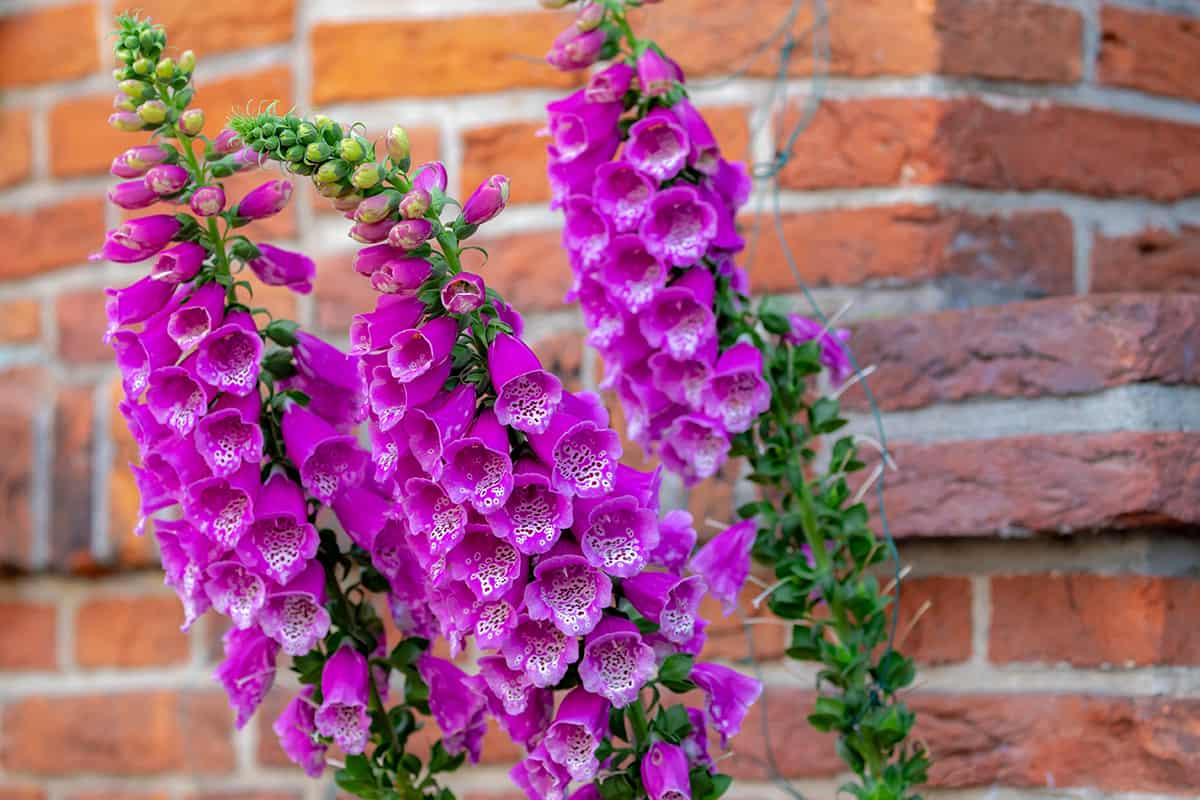
- Botanical name: Digitalis purpurea
- Family: Plantaginaceae
- USDA hardiness zones: 5 – 9
- Mature height: Up to 6 feet
- Mature spread: 1 to 2 feet
The common foxglove is a biennial flowering plant that is native to much of south and west Europe, and it has also become naturalized in some areas of the United States. It produces large, lush rosettes of foliage close to ground level, followed by spikes of tubular flowers which are an enormous attraction to pollinators. Different varieties of these plants can grow to heights of between 1 foot and 6 feet, allowing you to plant them at various positions in the border.
For example, ‘Sutton’s Apricot’ will grow to between 5 and 6 feet tall, while the ‘Dalmation White’ will reach a maximum of 2 feet tall. The care needs for common foxgloves are very similar to peonies, making them a great companion plant. They enjoy full sun or partial shade and should be grown in well-draining soils with medium moisture.
Most common foxgloves will bloom for several weeks at a time, from the end of spring through to the middle of summer. They work well as an accompaniment to Itoh peonies which bloom throughout June. One thing to note about common foxgloves is that they are toxic when ingested, so keep them away from curious children or pets who like to explore with their mouths.
They also self-sow freely by dispersing their seeds, so they will create new colonies of plants in the garden. This has led to them becoming invasive plants in some areas of the US, including much of California and Oregon. If you want to prevent the common foxglove from self-sowing, remove the flowerheads when they are spent.
Woodland Sage
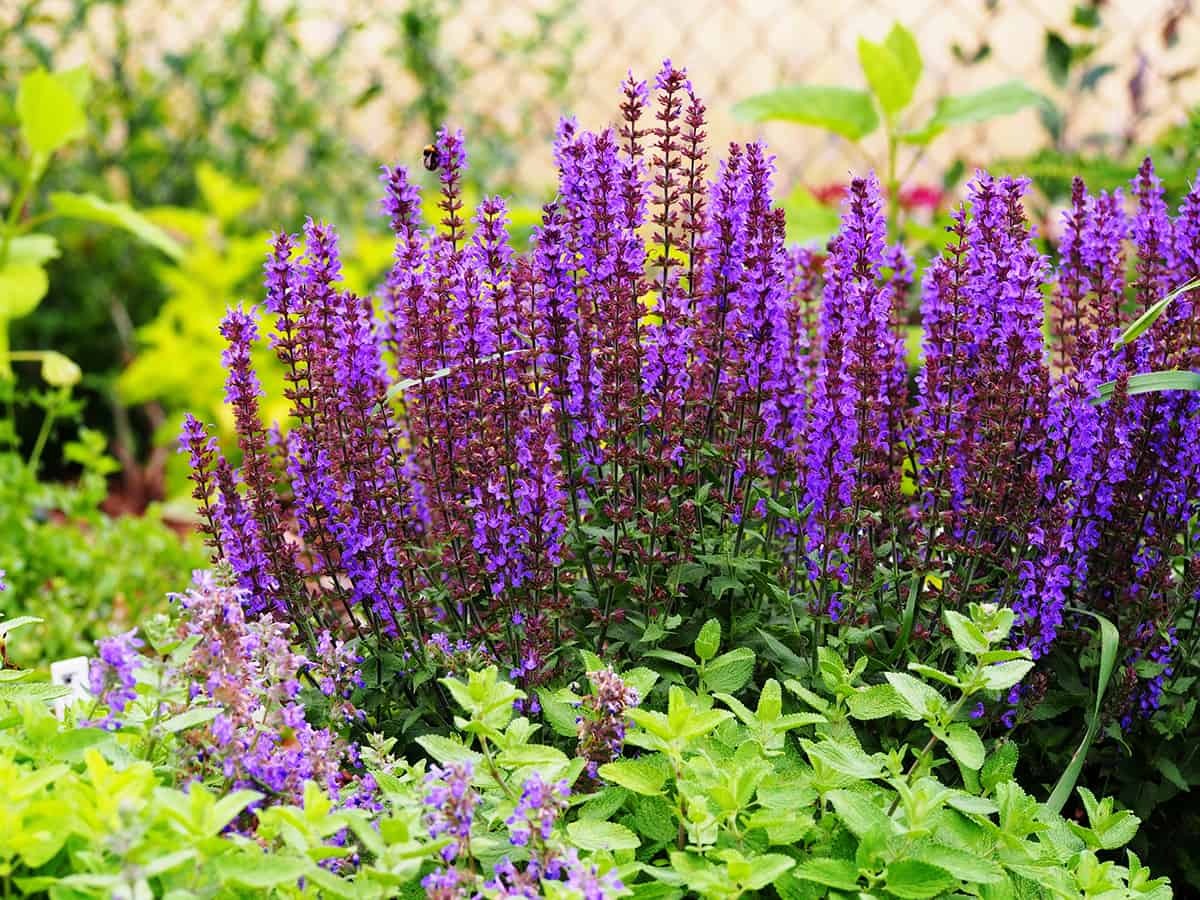
- Botanical name: Salvia sylvestris
- Family: Lamiaceae
- USDA hardiness zones: 4 – 8
- Mature height: 1 to 3 feet
- Mature spread: 1 to 2 feet
This is an award-winning type of sage that produces spikes of showy flowers for most of the summer. It is an herbaceous perennial that grows in compact mounds, with erect stems which look stunning alongside other plants with erect habits, such as lupines, foxgloves, and peonies.
It grows incredibly easily, making it a hassle-free plant that can fill out borders and cottage gardens nicely. Like peonies, it grows well in full sun, though it will also tolerate some partial shade. It thrives in well-draining soil that is kept moderately moist, but it can also survive in dry soils.
The foliage of this plant is fragrant and attractive and provides a beautiful backdrop to the flower stems which stand up to 3 feet tall. The erect stems hold spikes of violet flowers which contrast well against the fresh green leaves. The woodland sage is able to flower all summer long, from June right through to September, creating a pleasant mix of flowers to compliment the blooming period of various peonies.
